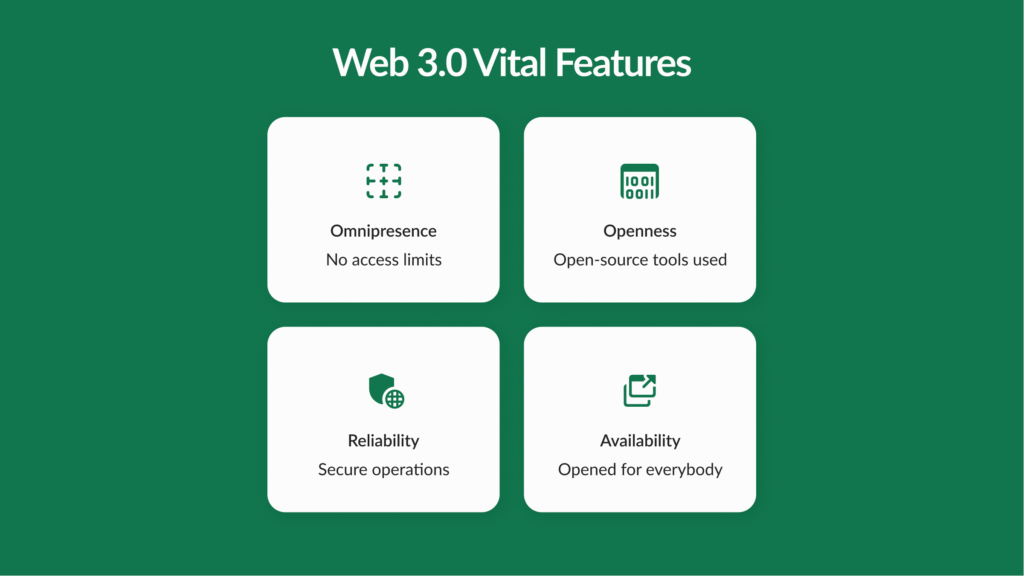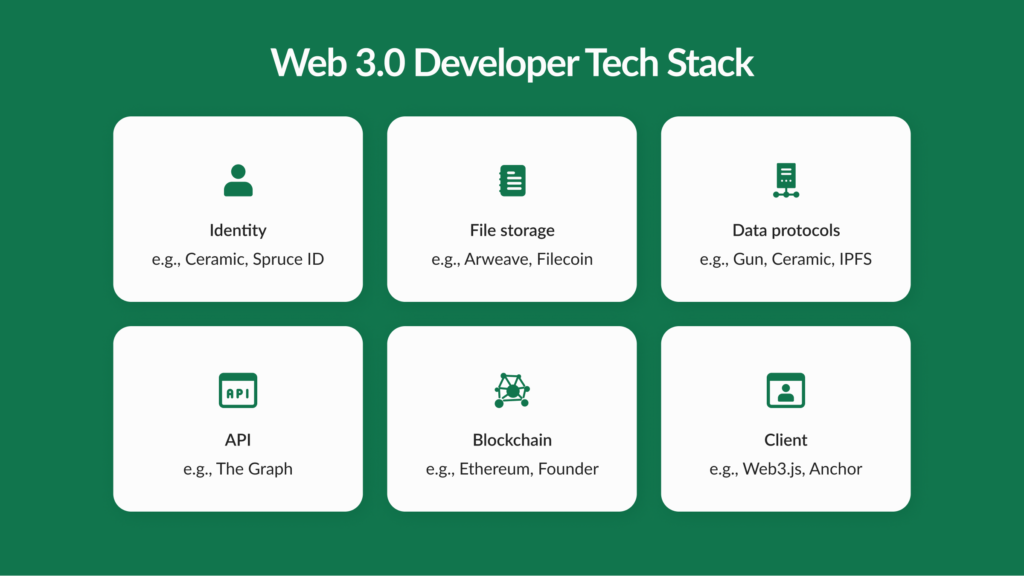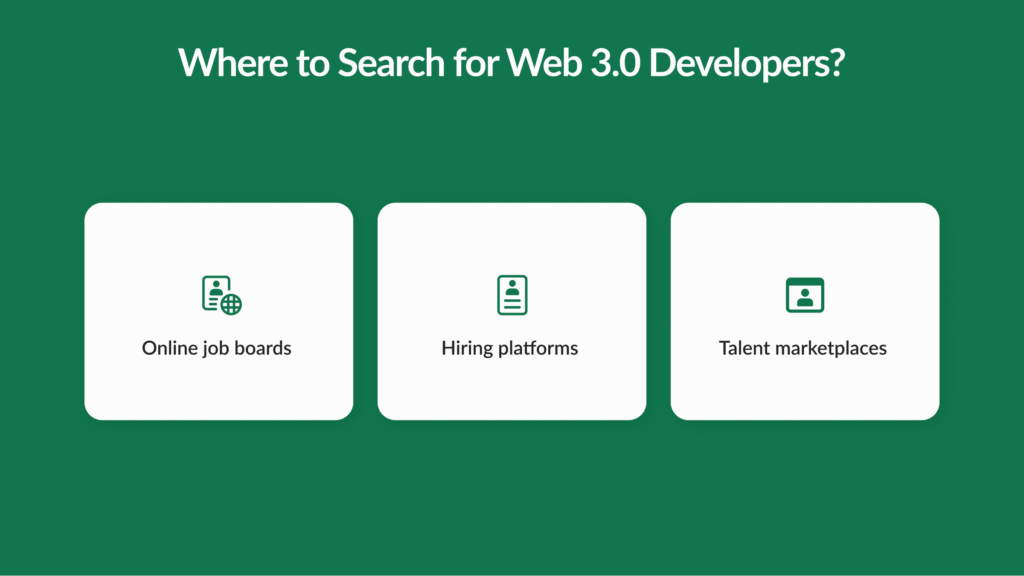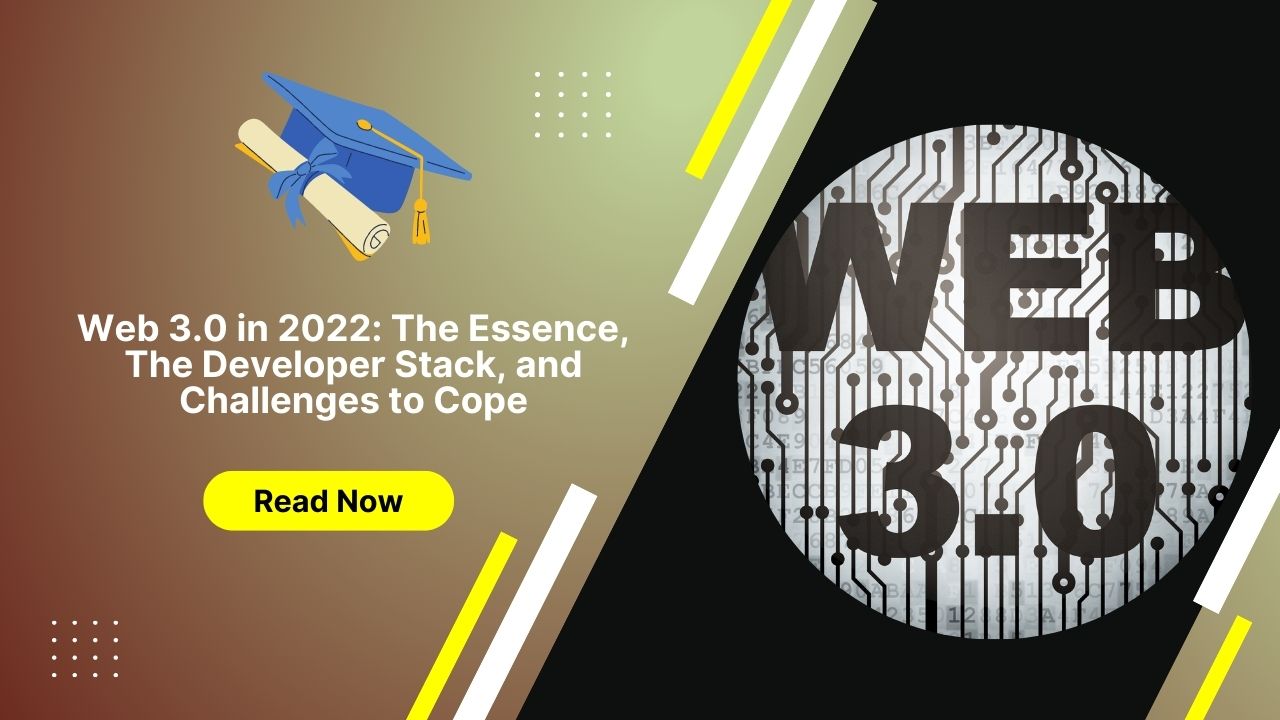You have probably heard IT analysts talking about the end of the Web 2.0 era and the advent of Web 3.0, a new Internet generation that uses more modern technologies. However, this technology is new to IT, so there is still much to discover. Therefore, we created this material to tell you about Web3 essence, its dissimilarities with previous Web 2.0, developer stack, and much more.
Web3 Essense and Benefits
First, let’s get acquainted with the essence of this concept. Web 3.0 is the Internet’s third generation using Machine Learning (ML), big data, Decentralized Ledger Technologies (DLT), blockchain, etc.
Web3 developers usually use the blockchain or decentralized networks of many peers (servers). Therefore, combining these two technologies to form a crypto-economic protocol is possible, giving users more freedom and avoiding many of the limitations associated with the algorithms of search engines and specific platforms.
Let’s explore other benefits of the forthcoming Internet generation.
- Ubiquity. Web 3 makes it possible to use the Internet anytime from any device, even unusual ones like electronic locks, smart lights, etc.
- Openness. Web3 development uses open-source tools that anyone can use.
- Credibility. The specificity of Web3 allows you to use the Internet safely, without the involvement of third parties, which enables you not to worry about data safety.
- Approachability. Any person can complete data processes employing Web 3.0.

So, now you have expanded your knowledge of Web 3 in general. Next, it’s time to examine its distinctions from Web 2.
Web 3.0 Compared to Web 2.0
Web 2.0 is the modern Internet to which we are accustomed. It is convenient, familiar, and performs many valuable functions. However, it still contains some flaws, which led to seeking new solutions and the emergence of Web3. Consider what problems the latest technology can solve.
Security. Both generations are relatively well protected, but Web3 boasts more anonymity.
Centralization. Unlike Web2, Web3 is decentralized and, therefore, free from the control of supervisory authorities and government regulators.
Controllability. In Web3, control does not depend on resource owners but is available to all users.
Storage. Web3 does not require centralized repositories and store information in blockchain-based nodes.
Absence of intermediaries. Web2 won’t function properly without third-party control, but Web3 can run independently.
Interoperability. Web 2.0 is used on desktop and mobile devices. Web 3.0 can operate various gadgets, which now requires mandatory synchronization with a phone or tablet.
Web3 is recognized by leading technology giants such as Meta. It allows artificial intelligence to perceive data “humanly” and opens up new horizons in user interaction.
How Web 3.0 Solves Web 2.0 Issues
Web 2.0 allows users worldwide to share information, promote their products, etc. However, this Internet generation has some shortcomings. Let’s examine their essence and methods of solving.
Authorship and possession
Many authors have met their readership and reached popularity on the Web. However, maintaining copyright is challenging since the data can be transferred to third parties. In Web3, it is easy to maintain the privacy of ownership and monetize your intellectual property without intermediaries.
The danger of hacking
Cybersecurity spending constantly rises because centralized services are very susceptible to hacking. Blockchain also solves this problem since any suspicious transaction can be readily noticed and withdrawn.
Total control and censorship
Internet hosting providers of the 2nd era have a monopoly on control of all hosted data and can change or delete it at will. Web3 provides a censorship-free space where people will decide about the information they post.
Distribution issues
In the coming epoch of Web 3.0, the Internet will be available almost anywhere, spread by IoT gadgets and smart devices.
Request Perception
By employing semantics, machines can perceive, and process requests better. Also, many smart devices will be able to do this independently.

Web3 Development Stack
It’s time to uncover which web development stack is employed to create this decentralized system. For convenience, we divide them into categories and consider each separately.

Identity
The Web3 identity is based on public key encryption and crypto wallets. Transactions can be signed with a public key, which can later be decrypted. However, this process mostly requires a server.
File storage
For Web3 developers, choosing the proper storage protocols is very important. The most popular options are:
- Arweave – allows you to store data without time limits.
- IPFS – a stable P2P protocol maintained by a vast system.
Data protocols
To obtain a fully decentralized stack, it is also necessary
to resolve the problem of attaching digital outcomes with blockchain-based protocols. Two of the most used are ThreadDB for Textiles and Libp2p.GunDB.
API
APIs are widely used, but they often perform their tasks in a centralized stack, which does not apply to Web3 because of the lack of an indexing level. For indexing in Web 3.0, developers can use The Graph.
Blockchain
Blockchain is the key technology of Web3. Here are some of the tools which can be used for such development:
- Hardhat is used to build DApps, based on JavaScript
- Brownie: a Python framework that allows you to develop and test blockchain smart contracts.
- Truffle: a JavaScript-based tool that enables you to create EVM applications.
Client
You can use a JavaScript or React framework for Web3 development. As for client SDKs on Ethereum, you may select between Web3.js or Ethers.js.
Web 3.0 Drawbacks
Although Web 3.0 is an up-and-coming technology with many advantages, it also has drawbacks. Let’s get to know them.
- Lack of explicit security guarantees. So far, there is no precise information about the digital security mechanisms used in Web 3.0.
- Property issues. Most likely, despite all the features, ordinary users will not be the absolute proprietors of the Web since investors will own it.
- Compatibility points. The Web3 will be more potent than the current Internet generation, requiring enough powerful hardware to operate it.
- Technological disadvantages. Currently, there is a lack of qualified, experienced Web3 experts. This suggests that there are problems that have yet to be deciphered. In addition, the new Internet is quite expensive and energy-intensive.
- WWW monetization. Some studies argue that Web 3.0 may focus solely on money.
However, these problems are easily solved and require only time and diligent research. Thus, although Web3 is currently under-researched, solutions to all problems will be found in the future due to its potential.
How to Employ a Web 3 Developer?
Many companies are looking for Web3 experts. So let’s determine ways to solve this problem.
Firstly, you can place a job offer or search for a specialist on various platforms. We list their main types below.
- Online job boards are a proven way to find professionals, where you can either publish your offer ad or choose from already submitted CVs.
- Recruitment platforms are also an effective way to find all the information about a potential employee quickly.
- Talent marketplaces are an excellent way to start looking for short- and long-term collaborations.

Nevertheless, if you want to minimize your investment in time and money, try contacting a qualified software vendor. Specialists can help you choose the best technologies and offer individual experts to complete the internal staff or the whole team to run the project.
Cooperation with a third-party software provider simplifies the selection of a specialist for you, allows you to scale your team at any time quickly, and guarantees a reliable and secure partnership.
Summarizing
Currently, Web 3.0 is under active evolution and research. Although it has not yet penetrated all areas, more companies are using it in their products. Therefore, you should consider the gradual study and implementation of this technology in your business processes to get ahead of your competitors.




